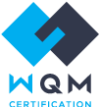I do get asked does getting “certified” mean you have a great quality management system. The answer is always no. It means you have a basic quality management system that meets internationally recognized standards but it does not mean you have a great system. You want a great quality management system here are six fundamentals.
1. Leadership: I am not talking lip service leadership but a hard core belief that a good quality management system is more important than short term profit because profits go up and down but your reputation for producing quality products stays forever. I am talking the words of the leading management thinker in the field of quality Dr. W. Edwards Deming in his book “Out of the Crisis” The aim of leadership should be to improve the performance of the human being and machine, to improve quality, to increase output and simultaneously bring pride of workmanship to people. A strong leader fosters an environment of excellence. How do you lead? Create a vision of how an ideal quality management system should operate, be involved, demand continual improvement and maintain your core beliefs regardless of the pressure to cut corners. True leadership is the cornerstone of a great quality management system. Everything else is a marketing buzzword.
2. Establishing objectives: Call them objectives, key process indicators, benchmarks or targets it doesn’t matter. You should measure the return on your quality management system investment just as you would the purchase of capital equipment. Identify the indicators that are inherent in a good quality management system. This could include minimal warranty, customer satisfaction ratings, on-time delivery performance that meets customer expectations, reduced waste, improved productivity, etc. The first step is to identify your starting point. The second step is to establish realistic goals/targets. It is in your best interests to follow the SMART approach: Specific, Measurable, Attainable, Relevant and Timely. Step three is to assign project leaders for each indicator. Accountability and focus on improvement is mandatory.
3. Complaint analysis and corrective action: Great companies do not fear customer complaints they fear not knowing about a customer complaint. A system should be established to ensure every single customer complaint is recorded. Your team should analyze those complaints for trends and priorities. You must establish triggers that force you to implement corrective action systems when a trend or priority is discovered. Corrective action is the act of looking at the root cause of the problem and updating your processes to ensure that same type of problem is eliminated. I understand that not every problem has a root cause that can be fixed. That is why you focus on the significant issues firs. One good corrective action that solves a problem is better than ten that simply act as band aids. Corrective action doesn’t need to be fancy to be effective but it does need to address the root cause and it must be documented to ensure accountability. There are numerous tools that help you get to the root cause including fishbone, 5-why, design of experiments however sometimes the most effective process is getting your best people in a room and brainstorming ideas on what went wrong. Leadership is creating a culture when complaints are not seen as a problem but an opportunity.
4. Management review: Meetings, meetings, meetings I know everyone hates meetings. Last time I checked getting a group of leaders together to review performance and plot strategy is still a fundamental responsibility. Effective meetings don’t always have to take place in a traditional face to face meeting format. Quick electronic meetings can be just as effective. There are a million articles on making meetings more effective and you can search that subject on your own. A “management review” meeting should focus on the action plan that will be taken when key process indicators are not meeting the target. The habit of identifying action plans can only be achieved if this meeting is consistent, participation is mandatory and there is accountability when key process indicators are not meeting the target. That starts with the most senior manager being involved and setting the tone.
5. Training: If you have a decent qualification process it should be assumed the new hire has the qualifications to perform the basic functions of the job. Everyone will need a basic training on general topics and specific company protocol. Great training is designed to quickly get personnel in the habit of becoming problem solvers. Consider creating your own internal information database or troubleshooting guide so common problems can be quickly addressed without involving additional team members. Youtube has created one of the most effective training platforms in history. There is a how to video that solves almost any problem. You can create a simple video library with nothing more than a smart phone.
6. Risk mitigation: Personally I do not see a dramatic difference between risk mitigation and continual improvement. A good mitigation program program should identify risks, prioritize those risks and then and create a plan to mitigate those risks. Risk can be anything that has a significant impact on profitability, regulatory compliance, meeting the mission and key objectives. Risk mitigation plans must be documented, posted and monitored to be effective.
